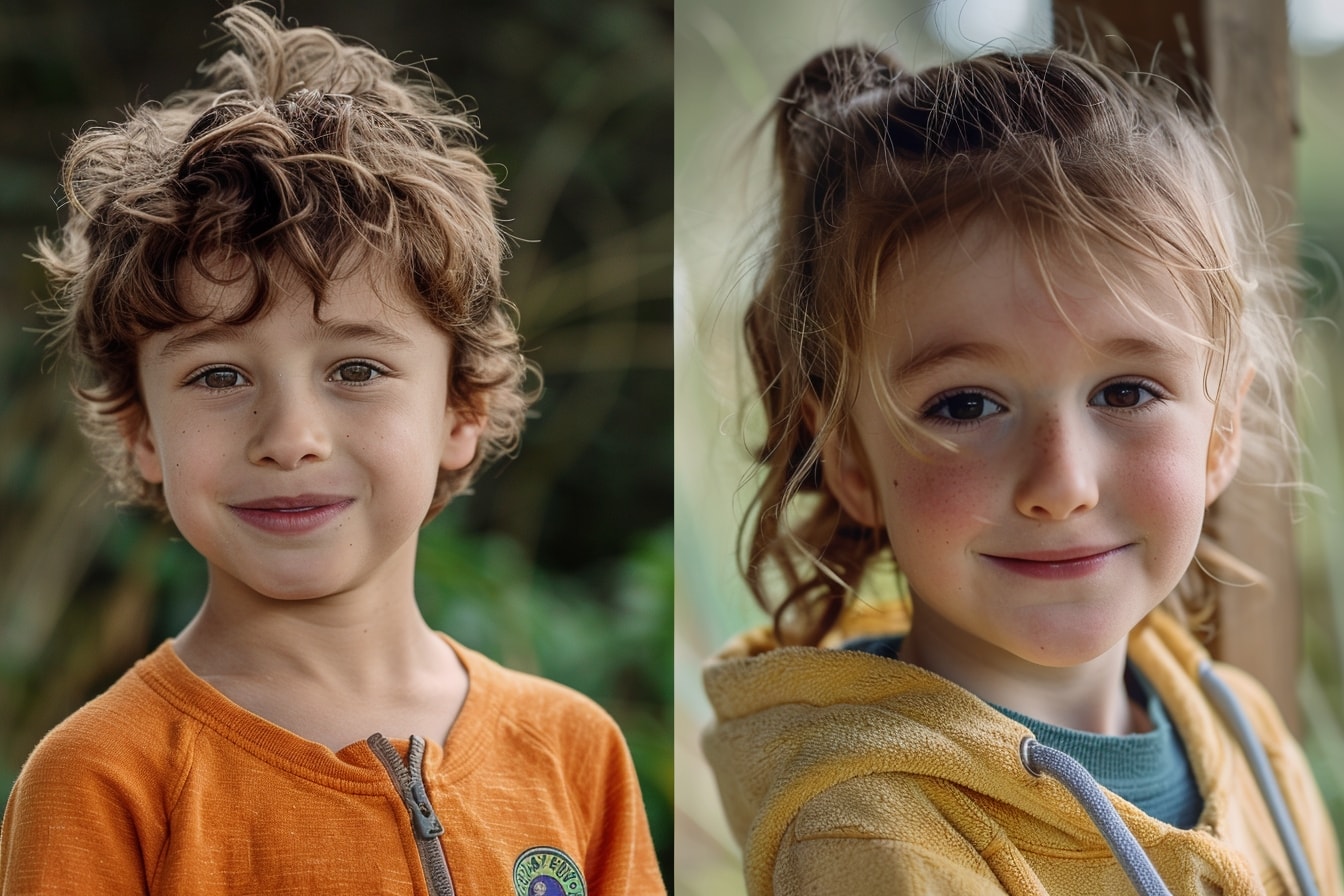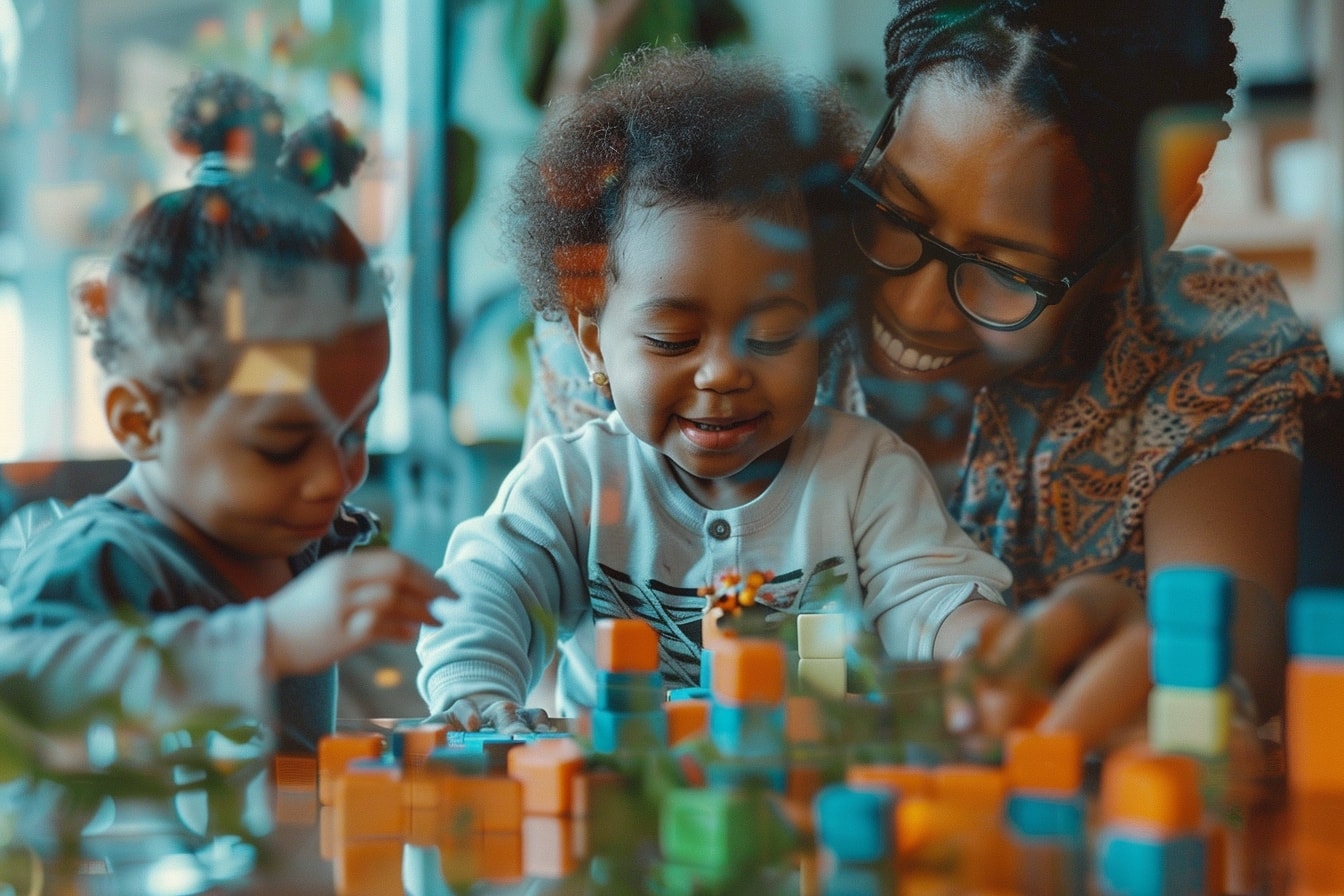Table of Contents
ToggleUnlocking Growth: Overcoming Fixed Mindset Traps in Parenting
Picture this: You’re sitting at the kitchen table, helping your child with their homework. They’re struggling with a math problem, and frustration is starting to set in. As you glance over their shoulder, you catch yourself saying, You’re just not good at math, are you?
It’s a scenario that plays out in households around the world, a subtle but powerful example of a fixed mindset in action. But what exactly is a fixed mindset, and why does it matter in the realm of parenting?
Allow me to shed some light on this concept. A fixed mindset, as popularized by psychologist Carol Dweck, is the belief that our abilities and intelligence are fixed traits that cannot be changed. In other words, if you’re not good at something, you never will be. This mindset can be insidious, seeping into our thoughts and actions without us even realizing it.
So, why should we care about cultivating a growth mindset in parenting? Well, the implications are profound. Research has shown that children with a growth mindset are more likely to embrace challenges, persevere in the face of adversity, and ultimately achieve greater success in academics and beyond. By contrast, children with a fixed mindset may shy away from challenges, fearing failure and avoiding opportunities for growth.
Now, you might be thinking, But how do I know if I have a fixed mindset? And even if I do, can it really impact my child’s development? The short answer is yes, and yes. But fear not, dear reader, for armed with knowledge and awareness, we have the power to break free from the shackles of a fixed mindset and pave the way for our children’s limitless potential.
Throughout this article, we’ll explore the common pitfalls associated with a fixed mindset in parenting, from labeling and comparing to avoiding challenges. But more importantly, we’ll arm you with practical strategies and insights rooted in Caribbean culture to help you foster a growth mindset in your family.
So, grab a cup of tea, settle in, and let’s embark on this journey together. It’s time to unlock growth and unleash the boundless potential that lies within each and every one of us.

Embracing Growth Opportunities
Let’s dive into the heart of the matter: embracing growth opportunities in parenting. It’s easy to get caught up in the day-to-day challenges of raising children, but by cultivating a growth mindset, we can transform these challenges into opportunities for learning and development.
One of the first steps in embracing growth opportunities is to recognize and challenge the labels we place on ourselves and our children. In Caribbean culture, as in many other cultures, there may be certain stereotypes or expectations associated with gender, academic performance, or career paths. For example, boys may be encouraged to excel in sports while girls are steered towards more traditionally feminine pursuits.
But here’s the thing: labels are limiting. When we label a child as smart or athletic, we inadvertently place constraints on their potential. Instead of seeing challenges as opportunities for growth, they may become paralyzed by the fear of failure, afraid to step outside the confines of their perceived identity.
So, how can we break free from the trap of labeling? It starts with language. Instead of praising children for their innate abilities (You’re so smart!), we can praise their effort and perseverance (I’m proud of how hard you worked on that project!). By shifting the focus from fixed traits to the process of learning and growth, we instill in our children the belief that they are capable of overcoming obstacles and achieving their goals.
Another key aspect of embracing growth opportunities is fostering a sense of curiosity and exploration. In Caribbean culture, there is a rich tradition of storytelling, music, and art that celebrates creativity and imagination. By encouraging children to explore their interests and pursue their passions, we open doors to new experiences and possibilities.
But embracing growth opportunities isn’t just about encouraging our children—it’s also about challenging ourselves as parents. It means stepping outside our comfort zones, embracing uncertainty, and leading by example. It means acknowledging our own limitations and mistakes, and showing our children that failure is not something to be feared, but rather an essential part of the learning process.
So, let’s embrace growth opportunities with open arms. Let’s challenge the labels that hold us back and encourage our children to reach for the stars. Together, we can create a future where every child has the opportunity to thrive and succeed, regardless of where they come from or what labels society may place upon them.

Comparing: The Thief of Joy
Let’s talk about a sneaky little culprit that often lurks in the shadows of our minds: comparison. It’s a natural human tendency to compare ourselves to others, but when it comes to parenting, this habit can quickly spiral out of control and rob us of our joy.
Picture this: You’re scrolling through social media, admiring photos of your friends’ seemingly perfect families. They’re taking exotic vacations, baking elaborate birthday cakes, and attending picture-perfect playdates. Meanwhile, you’re struggling to keep up with the laundry and juggling a dozen other responsibilities.
Sound familiar? You’re not alone. In today’s hyperconnected world, comparison has become an epidemic, fuelled by carefully curated images and highlight reels on social media. But here’s the thing: comparison is the thief of joy. When we constantly measure ourselves against others, we inevitably come up short, leading to feelings of inadequacy and self-doubt.
But it’s not just parents who fall victim to the comparison trap—our children are affected too. From a young age, they’re bombarded with messages about what it means to be successful, beautiful, or popular. They see their peers achieving milestones and accolades, and they can’t help but wonder why they don’t measure up.
So, how do we break free from the comparison trap and reclaim our joy? It starts with awareness. Recognizing when we’re comparing ourselves to others is the first step towards breaking the cycle. Next, we need to challenge the validity of our comparisons. Are we comparing our behind-the-scenes to someone else’s highlight reel? Are we basing our worth on external validation?
One strategy for overcoming comparison is to practice gratitude. Instead of focusing on what we lack, we can cultivate gratitude for what we have. Caribbean culture is rich in traditions that celebrate community, connection, and resilience. By focusing on our strengths and the blessings in our lives, we can shift our perspective and find joy in the present moment.
Another helpful technique is to set realistic expectations for ourselves and our children. Rather than striving for perfection, we can strive for progress. We can remind ourselves that every family is unique, with its own set of challenges and triumphs. By embracing our imperfections and celebrating our differences, we can create a more compassionate and supportive environment for ourselves and our children.
So, let’s stop comparing and start celebrating. Let’s focus on the journey rather than the destination, and let’s remember that true joy comes from within, not from external validation. Together, we can break free from the comparison trap and create a life filled with love, laughter, and authentic connection.

Confronting Challenges Head-On
Ah, challenges. They’re like unwelcome guests who show up uninvited at the most inconvenient times. But here’s the thing: rather than shying away from challenges, we can choose to confront them head-on and emerge stronger on the other side.
Parenting is chock-full of challenges, from sleepless nights and temper tantrums to navigating the murky waters of adolescence. But here’s the good news: challenges are not obstacles to be avoided, but opportunities for growth and learning.
One of the first steps in confronting challenges head-on is to shift our mindset from one of fear and avoidance to one of curiosity and resilience. Instead of viewing challenges as threats to our well-being, we can reframe them as opportunities to stretch our limits and expand our capabilities.
Caribbean culture is steeped in resilience and resourcefulness, with a long history of overcoming adversity and triumphing in the face of hardship. From the struggles of slavery and colonization to the resilience of communities in the aftermath of natural disasters, Caribbean people have demonstrated time and time again that they are capable of overcoming even the most daunting challenges.
So, how can we apply this spirit of resilience to our own parenting journeys? One strategy is to embrace a growth mindset, as pioneered by psychologist Carol Dweck. Rather than viewing challenges as threats to our self-worth, we can see them as opportunities for learning and growth.
Another key aspect of confronting challenges head-on is to practice self-care and self-compassion. Parenting can be exhausting and overwhelming at times, and it’s important to prioritize our own well-being so that we can show up fully for our children. This may mean setting boundaries, asking for help when needed, and carving out time for activities that nourish our souls.
But perhaps the most important lesson in confronting challenges head-on is to lead by example. Our children are watching and learning from us every day, and how we respond to challenges sends a powerful message. By demonstrating resilience, perseverance, and a willingness to tackle obstacles head-on, we show our children that they too are capable of overcoming whatever life throws their way.
So, let’s confront challenges head-on with courage and conviction. Let’s embrace the lessons they have to teach us and emerge stronger, wiser, and more resilient than ever before. Together, we can show our children that with perseverance and determination, there’s no challenge too great to overcome.

Trends in Parenting: Shifting Perspectives
Let’s take a moment to step back and examine the ever-evolving landscape of parenting trends. From helicopter parenting to free-range parenting, the way we raise our children is constantly influenced by a myriad of cultural, social, and technological factors.
But here’s the thing: parenting trends are not one-size-fits-all. What works for one family may not work for another, and what’s considered trendy today may be outdated tomorrow. That being said, it’s important to stay informed about current trends and how they may impact our parenting choices.
One trend that has gained traction in recent years is the move towards more mindful and intentional parenting practices. In a world that’s constantly buzzing with distractions, many parents are seeking ways to slow down, reconnect with their children, and prioritize quality time over quantity.
This trend is reflected in the rise of practices such as attachment parenting, which emphasizes the importance of building strong emotional bonds with children through responsive and nurturing caregiving. It’s also seen in the growing popularity of mindful parenting techniques, such as meditation and yoga, which help parents cultivate presence and awareness in their interactions with their children.
But while mindful parenting has its merits, it’s not without its critics. Some argue that it places undue pressure on parents to be perfect, leading to feelings of guilt and inadequacy. Others worry that it may prioritize the needs of the child over the well-being of the parent, neglecting the importance of self-care and boundary-setting.
Another trend that’s been making waves in the parenting world is the rise of digital parenting. With the proliferation of smartphones, tablets, and social media platforms, parents are grappling with how to navigate the digital landscape and set healthy boundaries for their children.
This trend is particularly relevant in Caribbean culture, where technology is rapidly becoming a ubiquitous part of daily life. From WhatsApp groups to TikTok challenges, parents are faced with new challenges and opportunities for connection in the digital age.
But while technology can be a powerful tool for communication and education, it also comes with its own set of risks and challenges. Parents must contend with issues such as screen time management, online safety, and the impact of social media on children’s self-esteem and mental health.
So, how can we navigate these shifting trends in parenting and make informed choices that are right for our families? It starts with awareness and reflection. By staying informed about current trends and critically evaluating their implications for our children’s well-being, we can make intentional choices that align with our values and priorities.
Ultimately, parenting is a journey of constant learning and adaptation. As trends come and go, one thing remains constant: the love and devotion we have for our children. By staying true to our hearts and embracing the wisdom of our ancestors, we can navigate the ever-changing landscape of parenting with grace and resilience.

Actionable Steps for Growth
Now that we’ve explored the importance of embracing a growth mindset in parenting, it’s time to roll up our sleeves and put theory into practice. But where do we begin? Fear not, dear reader, for I’m here to guide you through some actionable steps for fostering growth and resilience in your family.
- 1. Cultivate Self-Awareness: The journey towards a growth mindset begins with self-awareness. Take some time to reflect on your own beliefs and attitudes towards challenges and failure. Are there areas where you tend to default to a fixed mindset? What triggers these reactions? By shining a light on these patterns, you can begin to challenge and reframe them.
- 2. Foster a Growth-Oriented Environment: Create an environment that fosters curiosity, exploration, and learning. Encourage your children to ask questions, try new things, and embrace their mistakes as opportunities for growth. Celebrate their efforts and progress, rather than focusing solely on outcomes.
- 3. Practice Growth Mindset Language: Pay attention to the language you use with your children and yourself. Instead of praising innate abilities (You’re so smart!), focus on effort and process (I’m proud of how hard you worked!). Encourage your children to adopt a growth mindset by praising their perseverance and resilience in the face of challenges.
- 4. Model Resilience: Children learn best by example, so it’s important to model resilience and perseverance in your own life. Share stories of challenges you’ve overcome and how you’ve grown stronger as a result. Show your children that failure is not something to be feared, but rather a natural part of the learning process.
- 5. Encourage Reflection: Create opportunities for reflection and growth within your family. Set aside time for family meetings or check-ins where you can discuss challenges, successes, and areas for improvement. Encourage open and honest communication, and support each other in setting and achieving goals.
But fostering a growth mindset isn’t just about individual actions—it’s also about building a supportive community that values learning and growth. Reach out to other parents, educators, and community leaders who share your commitment to fostering resilience and perseverance in children.
Remember, Rome wasn’t built in a day, and neither is a growth mindset. It’s a journey of constant learning and adaptation, with plenty of twists and turns along the way. But by taking these actionable steps and embracing the wisdom of Caribbean culture, you can create a family environment where growth and resilience flourish.
As we come to the end of our journey together, let’s take a moment to reflect on the lessons we’ve learned and the growth we’ve experienced along the way. We’ve explored the pitfalls of a fixed mindset in parenting, from labeling and comparing to avoiding challenges, and we’ve armed ourselves with practical strategies for fostering a growth mindset in our families.
But the journey doesn’t end here—it’s just the beginning. As parents, we have the power to shape the future of our children and the world they inhabit. By embracing challenges, cultivating resilience, and leading by example, we can create a ripple effect of growth and positivity that extends far beyond our own families.
So, I encourage you to take what you’ve learned and put it into action. Challenge yourself to confront those fixed mindset traps when they arise, and remind yourself that every challenge is an opportunity for growth. Celebrate the progress you’ve made and the milestones you’ve achieved, no matter how small they may seem.
But most importantly, remember to be kind to yourself. Parenting is a messy, imperfect journey, filled with ups and downs, twists and turns. It’s okay to stumble along the way—it’s how we pick ourselves up and keep moving forward that matters.
So, here’s to embracing growth, confronting challenges, and fostering resilience in ourselves and our children. Together, we can create a future where every child has the opportunity to thrive and succeed, no matter what obstacles they may face. Here’s to a future filled with limitless potential and boundless possibilities.
Thank you for joining me on this journey. Until next time, keep shining bright and spreading love.
Want to take your knowledge to the next level? Check out these must-read articles:
- How to instill a growth mindset in your baby from an early age
- How to help your baby develop a sense of purpose and passion by following their interests and strengths
Organize your baby’s wardrobe with our baby clothes closet organizer products! Our organizers are designed specifically for baby clothes. Get your baby’s clothes neat and tidy with our selection of organizers – shop now!
Step into Sue Brown's World of Baby Care, where you'll find a treasure trove of knowledge and wisdom waiting to be explored. Sue's dedication to providing accurate and up-to-date information on baby care shines through in every article, blog post, and resource she shares. From newborn essentials to sleep training tips, breastfeeding advice to nurturing your baby's development, Sue covers a wide range of topics that are essential for every parent to know. Her warm and compassionate approach creates a sense of community and reassurance, making her website a safe haven for parents seeking guidance and support. Let Sue Brown be your partner in this beautiful journey of parenthood, as she empowers you to create a loving, nurturing, and thriving environment for your little one.
- Indoor Air Quality for Infant Respiratory Health - October 20, 2025
- Positive Discipline Foundations: Setting the Stage From Infancy - October 18, 2025
- 2025’s Most Innovative Baby Products Worth the Investment - October 16, 2025
Other Great Posts:
- How to use growth mindset language with your baby, such as not yet instead of can’t
- How to celebrate your baby’s progress and achievements, not just their outcomes
- How to use games and activities to promote a growth mindset in your baby, such as puzzles, building blocks, and memory cards
- How to help your baby overcome their fears and anxieties by using growth mindset strategies



